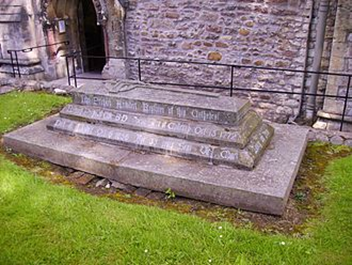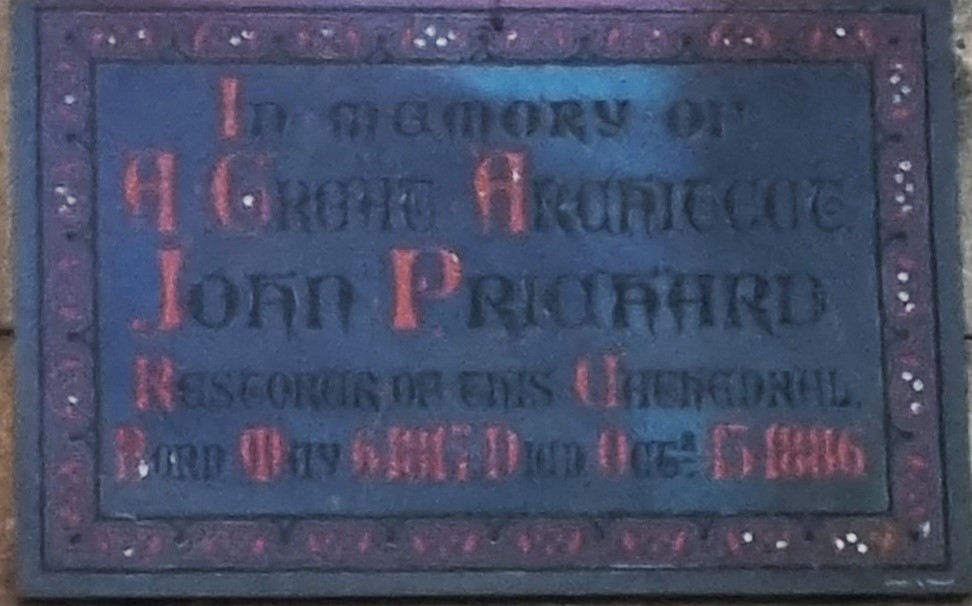Content can be downloaded for non-commercial purposes, such as for personal use or in educational resources.
For commercial purposes please contact the copyright holder directly.
Read more about the The Creative Archive Licence.
Description
Mr. Prichard was the youngest son of the Rev. Richard Prichard, RU., who for the long period of about 35 years was Vicar of Llandaff. The early years of his life Mr. Prichard spent at Llandaff, whence, at the proper time, he left for London, where he was articled to Mr. Walker, architect, who had been one of the earlier pupils of the celebrated architect, Pugin. Upon the death of the latter, his publications, were continued by Mr. Walker, and in these Mr. Prichard had no small hand. Mr. Prichard's articles having expired, he removed to Oxford, where he established a practice on his own account. The deceased gentleman, however, did not stay long at the University town, and he returned to Llandaff, where lie was appointed diocesan architect, a position which he held up to the time of his death, a period of upwards of 40 years.
At Wednesday morning's meeting of the Llandaff Diocesan Conference the Lord Bishop referred to the great loss the diocese had sustained in the death of Mr. Prichard, a loss, he thought, which it would be exceedingly difficult to replace. Evidences, of Mr. Prichard's consummate skill as an architect were to be seen on every hand in the neighbourhood.
By an Occasional Art Contributor.
Mr. Prichard's death will be, heard of with regret far outside the circle of his own county. During an age when ecclesiastical architecture has stood almost, in the forefront of all art in England, the designs from his pencil have been recognised as being distinguished by qualities of grace and purity of style quite beyond the ordinary Gothic, which the genius of Welby Pugin and the energy of the "Revival" have set down somewhere in most parishes of England. Fashion changes quicker than it should, and only a tew short years back that "Revival" so had it that every building, whether church, bank, or warehouse, must be Gothic.
All fashion has its inconsistencies, and Gothic, especially for secular purposes, promises soon to become only past history. But in such past history, and in this district, no name is so identified with truthful, scholarly design as that of John Prichard. Gothic was essentially his style, and on one occasion he pointed it out as a curious fact that the only building of his designing which the town of Cardiff contained was in the classic style. This building is the Savings' Bank, of which so much has, unfortunately, been lately heard, but which is, nevertheless, a really, pleasing and good specimen of Italian design.
References by Dean Vaughan.
On Sunday afternoon at Llandaff Cathedral the Very Rev. Dean Vaughan, preaching on the, occasion of thanksgiving for the harvest from the words, “That which thou sowest is not quickened except it did; and that which thou sowest. thou sowest not that body that shall be," alluded to the late Mr. John Prichard in the following terms: It was impossible, he said. that our thoughts should not turn today to the subject which has engaged us the harvest of Nature and the harvest, of grace. I know not whether the moralist or the poet, would find more to animate the higher flights of his genius in the laying to rest of a great architect at the door of his chief handiwork.
The Cathedral of Llandaff owes its very existence, in its present grace and beauty, to the eye, the mental even more than the corporeal, of John Prichard. He was born and nursed in its precincts. The bodily eye of the young man saw it in its degradation, the mental eye saw it as it had been and as it ought to be. The great architect is like the great poet. He has, to see the invisible. He has to re-call and re-people the past he has, to forecast and foresee the future. Unlike the poet in one respect, happier than the poet in one respect, it is given him now and then to realise his ideal, to re-animate the past, and give it no phantom form, but a very substantial being, for generations that shall be born. Circumstances favoured this man in his aspirations.
He lived under the fostering eye of three successive custodians of the cathedral, equally bent upon lifting it from its dunghill and setting it again among the beauties and glories of its people. They were his nursing fathers, but he was their eye, their head. and their inspiration. The mighty architect of St. Paul's Cathedral lies under its dome, with the proud inscription upon his marble covering stone:
Si monumentum requiris, circumspice.
If monument thou seekest, look around.
In far Llandaff there was laid in sleep yesterday one who deserves a like monument in his native Principality. With his own hands, fasting and self-forgetting, he picked out with loving solicitude the splendid particulars, absolutely lost to view and knowledge behind a portentous baldachin, of that Norman arch over the holy table, the pride of our cathedral. His chaste, yet inventive genius reared that graceful spire, which always seems to lift itself higher than its height, warrants in sight of fields and roads, stretching far away from the village city. Over every tiniest piece of carving, wood or stone, his watchful love stood sentinel now he "sleeps beneath its shade” till the trumpet of the Archangel shall bid sleepers, wake.





Do you have information to add to this item? Please leave a comment
Comments (0)
You must be logged in to leave a comment